Fundamentals
Problem Traversal Theory was developed by challenging strongly held universal definitions through years of decomposing each idea down to their smallest parts and reasoning back up to new ways of managing them.
At the heart of the theory is the idea that every problem is a desire, which leads to a redefinition of old ideas that underpin Problem Traversal Theory’s activities:
What a Problem Is
In Problem Traversal Theory, the idea of a problem has been broken down to its smallest indivisible parts and explicitly defined using them. Thinking about problems in this structured, mechanical way forms the foundation for its intuitive problem management activities.
A problem is defined as...
A sentient entity’s desire for a thing to transition from a current state to a specific potential state against resistance.
...and can be written using this formula: [Sentient entity] want(s) [thing] [potential state].
ex. Sally wants John's car to be properly maintained.

What a Solution Is
In Problem Traversal Theory, a solution shares the same indivisible parts as a problem but is rooted in a potential desire. As a result, solution and potential problem are used interchangeably within the theory.
A solution is defined as...
A sentient entity’s potential desire for a thing to transition from a current state to a specific potential state against resistance.
...and can be written using this formula: [Sentient entity] could want [thing] [potential state].
ex. Sally could want John’s car to be properly maintained.
Since a solution is treated as a potential problem, its formula uses the word “could” to signify its potential, unvalidated nature.
